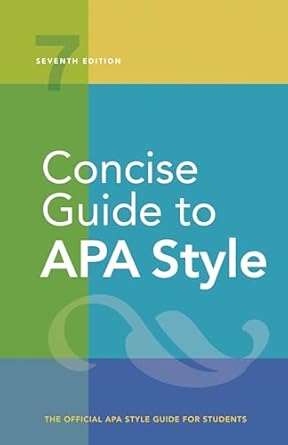[toc]
square brackets guide academic writing rules
Square Brackets Guide: Academic Writing Rules
Date: 6/5/2022
Concise Guide to APA Style: 7th Edition (OFFICIAL)
Page 114 Review
Understanding Square Brackets in Academic Writing: A Comprehensive Guide
Square brackets are essential punctuation marks used in academic writing to provide clarity and additional information without disrupting the flow of the main text.
This commentary delves into the specific rules outlined in the excerpt, offering a detailed explanation and examples for each case.
Enclosing Parenthetical Material Within Parentheses
One of the primary uses of square brackets is to enclose parenthetical material that already exists within parentheses.
This helps to avoid confusion and maintain readability.
For instance, the excerpt provides the following example:
“(The results for the control group [n = 8] are also presented in Figure 2.)”
Here, the phrase “n = 8” is enclosed in square brackets to provide the sample size of the control group.
This information is supplementary but crucial for understanding the context of the results.
Without the square brackets, the nested parentheses would make the sentence cumbersome and difficult to parse.
Enclosing Abbreviations Within Parentheses
Square brackets are also used to enclose abbreviations when the abbreviated term appears within parentheses.
This is particularly useful when introducing a widely known abbreviation.
“(Minnesota Multiphasic Personality Inventory—2 [MMPI-2]; Butcher et al., 2001)”
In this example, “MMPI-2” is the abbreviation for “Minnesota Multiphasic Personality Inventory—2.” The square brackets clarify that “MMPI-2” is the abbreviation being defined within the parenthetical statement.
This practice ensures that readers unfamiliar with the abbreviation can quickly understand its meaning.
Enclosing Values of Confidence Intervals
In statistical reporting, square brackets are used to enclose the values that represent the limits of a confidence interval.
This provides a concise way to present the range of values within which a population parameter is likely to fall.
“95% Cls [-7.2, 4.3], [9.2, 12.4], and [-1.2, -0.5]”
Here, each set of square brackets contains the lower and upper bounds of a 95% confidence interval.
This notation is standard in academic papers and research reports, allowing readers to quickly assess the precision of the estimated values.
Enclosing Material Inserted in a Quotation
When inserting words or phrases into a quotation to provide clarification or context, square brackets are used to indicate that the inserted material is not part of the original quote.
This is essential for maintaining the integrity of the source material.
“Schofield et al. (2016) found that ‘these types of [warm and accepting] parenting behaviors are positively associated with healthy child and adolescent adjustment’ (p. 615).”
In this case, the phrase “warm and accepting” is inserted into the original quote to provide a more specific description of the parenting behaviors being discussed.
The square brackets signal that these words were added by the author of the current paper, not by Schofield et al. (2016).
Enclosing Descriptions of Form in Reference List Entries
In a reference list, square brackets can be used to enclose a description of the form of a work, particularly for items that fall outside the typical peer-reviewed academic literature.
This helps readers understand the nature of the source.
Cases Where Square Brackets Should Not Be Used
The excerpt also highlights specific situations where square brackets should *not* be used.
These include:
- Setting off statistics that already include parentheses:
“Correct: in the first study, F(1, 32) = 4.37, p = .045.”
“Incorrect: in the first study (F[1, 32] = 4.37, p = .045).”
“Incorrect: in the first study [F(1, 32] = 4.37, p = .045].”
- Around the year in a narrative citation when the sentence containing the narrative citation appears in parentheses:
“Correct: (as Gregory, 2020, concluded . . .)”
“Incorrect: (as Gregory [2020] concluded . . . )”
These rules are crucial for maintaining consistency and clarity in academic writing.
Using square brackets incorrectly can lead to confusion and misinterpretation of the information being presented.
Conclusion
Mastering the use of square brackets is essential for producing clear, accurate, and professional academic writing.
By adhering to the guidelines outlined in the excerpt, writers can ensure that their use of square brackets enhances the readability and credibility of their work.
The correct application of these rules demonstrates attention to detail and a commitment to maintaining the standards of scholarly communication.
Buy full ebook for only $18: https://www.lulu.com/shop/american-psychological-association/concise-guide-to-apa-style-7th-edition-official/ebook/product-rmzpq54.html?page=1&pageSize=4
Square Brackets Guide Academic Writing Rules
Read more: Creating Effective Tables: A Guide for Academic Writing


Leave a Reply